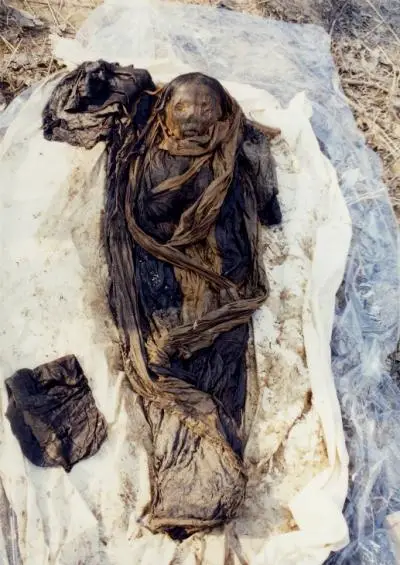High magnification micrograph of ground glass hepatocytes, as seen in a chronic hepatitis B infection with a high viral load. Wiki Commons
The discovery of a mummified Korean child with relatively preserved organs enabled an Israeli-South Korean scientific team to conduct a genetic analysis on a liver biopsy which revealed a unique hepatitis B virus (HBV) genotype C2 sequence common in Southeast Asia.
Additional analysis of the ancient HBV genomes may be used as a model to study the evolution of chronic hepatitis B and help understand the spread of the virus, possibly from Africa to East-Asia. It also may shed further light on the migratory pathway of hepatitis B in the Far East from China and Japan to Korea as well as to other regions in Asia and Australia where it is a major cause of cirrhosis and liver cancer.

The reconstruction of the ancient hepatitis B virus genetic code is the oldest full viral genome described in the scientific literature to date. It was reported in the May 21 edition of the scientific journal Hepathology by a research team from the Hebrew University of Jerusalem’s Koret School of Veterinary Medicine, the Robert H. Smith Faculty of Agriculture, Food and Environment; the Hebrew University’s Faculty of Medicine, the Hadassah Medical Center’s Liver Unit; Dankook University and Seoul National University in South Korea.
Carbon 14 tests of the clothing of the mummy suggests that the boy lived around the 16th century during the Korean Joseon Dynasty. The viral DNA sequences recovered from the liver biopsy enabled the scientists to map the entire ancient hepatitis B viral genome.
Using modern-day molecular genetic techniques, the researchers compared the ancient DNA sequences with contemporary viral genomes disclosing distinct differences. The changes in the genetic code are believed to result from spontaneous mutations and possibly environmental pressures during the virus evolutionary process. Based on the observed mutations rates over time, the analysis suggests that the reconstructed mummy’s hepatitis B virus DNA had its origin between 3,000 to 100,000 years ago.
The hepatitis B virus is transmitted through the contact with infected body fluids , i.e. from carrier mothers to their babies, through sexual contact and intravenous drug abuse. According to the World Health Organization, there are over 400 million carriers of the virus worldwide, predominantly in Africa, China and South Korea, where up to 15 percent of the population are cariers of the virus.
In recent years, universal immunization of newborns against hepatitis B in Israel and in South Korea has lead to a massive decline in the incidence of infection.
The findings are the result of a collaborative effort between Dr. Gila Kahila Bar-Gal of the Hebrew University of Jerusalem’s Koret School of Veterinary Medicine; Prof. Daniel Shouval of the Hadassah Medical Center’s Liver Unit and Hebrew University; Dr. Myeung Ju Kim of Dankook University, Seok Ju Seon Memorial Museum; Dr. Dong Hoon Shin of Seoul National University, College of Medicine ; Prof Mark Spigelman of the Hebrew University’s Dept. of Parasitology and Dr. Paul R. Grant of University College of London,Dept. of Virology.




